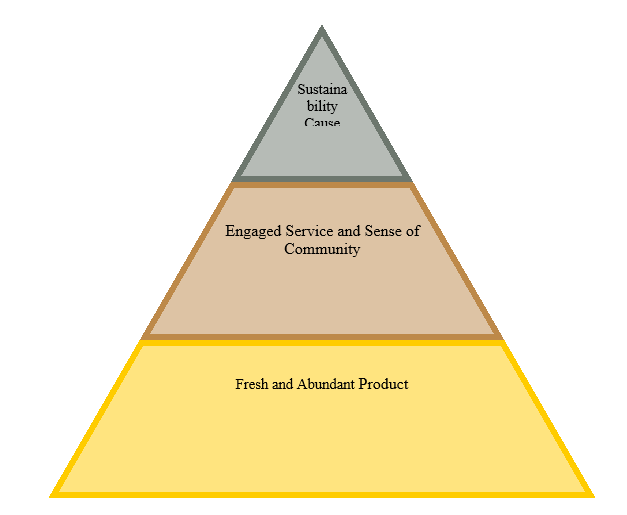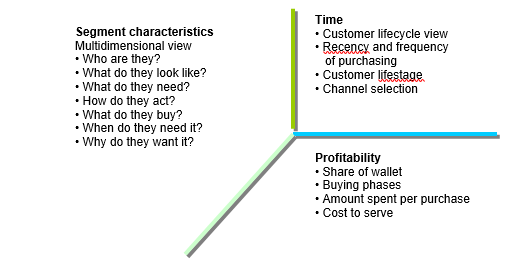Introduction
In their paper, “The Customer Pyramid: Creating and Serving Profitable Customers,” Valarie A. Zeithaml, Roland T. Rust, and Katherine N. Lemon discuss a new approach to segmenting customer targeting and focusing the firm’s efforts on the most profitable targets.
Many customers are too costly to do business with and have little potential to become profitable even in the long term. It is neither practical nor profitable to meet all customers’ expectations. In many cases companies overcharge their profitable customers subsidizing the worst customers. So in many cases it is advisable that companies do away with the unprofitable sector of their business. Service investments across all customer segments will not be equally profitable to organizations. Different segments of customers have different degrees of sensitiveness to marketing programs and have different profit profiles.
Many companies develop tiers to segregate their customer base to identify their most profitable customer base. This theory provides a detailed set of blueprints for any company to increase customer retention, loyalty, and profitability. The Customer Pyramid can be defined as tiers of customer segments segregated by organizations on the basis of their share to profit, sensitivity to price and responsiveness to new schemes.
Main text
Companies have traditionally used customer segmentation approaches on the basis of geographic or demographic attributes such as age, gender, etc. to classify customers. The concept of customer loyalty is a recent phenomenon that relies not on differentiating customers by demographic factors but by more business-related attributes such as their purchase history or profitability, or by their expected lifetime value.
All of them have in common a more or less detailed segmentation of the customer base similar to Zeithaml’s customer pyramid. First, the Platinum customers are the most profitable customers, and are typically heavy users of the product, who are not overly priced sensitive and whose commitment to the enterprise is high. Second, are Gold customers at the second-best strata. Though their profitability level is lower and the commitment is not as high as platinum members, they are heavy users. Iron customers are third in the pyramid. These customers provide the volume needed to utilize the firm’s capacity but whose spending levels, loyalty and profitability are not substantial enough for special treatment. Last are the Lead customers.
They are the customers that cost the company money. The company must minimize this customer segment, either by trying to upgrade customers or by disassociating from them. Each of these customer segments has a different profitability and different service level requirements and expectations. Therefore service offerings should be tailored differently to each of the segments. The customer pyramid tool enables firms to identify differences in current and future customer profitability. The key to segmenting customers by profitability levels is combining per-customer acquisition and maintenance cost data with revenue information.
Virtually any well-known company that has created an evangelistic customer base could draw its own pyramid. If you are struggling with how your company could draw a powerful pyramid, let me give you two more examples.
Companies that provide credit cards (for example Citibank) differentiate their customer base by using the frequency of usage and amount used. They differentiate on the basis of Platinum or Gold or Normal cards. The service offerings differ on the basis of the ownership of these cards.
Consider Whole Foods Market, the world’s leading natural and organic foods supermarket. Whole Foods has created food fervor among its customers based on providing a great product at the base of the pyramid (Figure 1), engaged and personalized service and a real sense of community at the middle level, and a commitment to environmental stewardship and sustainability at the peak.

IBM has dome customer segmentation on the basis of time, profitability and demographics. The details are given in Figure 2.

IBM has used segmentation as a vehicle by which it knows and manages its portfolio of customers. Customer segmentation informs and directs and is directly linked to profitability.
Ineffectively managing and growing the portfolio of customers, IBM needs to look to segmentation to tell them:
- Highly profitable customers: What can we do to keep these customers and keep them spending? How can we attract more like them?
- Profitable customers: How do we get more of these customers to adapt the habits (spend) like our highly profitable ones?
- Unprofitable customers: How can we phase out these customers and, in the meantime, serve them economically?
Summary
To make full use of customer segmentation’s potential, IBM made its customer loyalty pyramid by studying the dynamic interaction of three key variables: segment characteristics, time and profitability (Figure 1).
References
Kotler and Keller (2006) Marketing Management, twelfth Edition. New Jersey: Pearson and Prentice Hall.
Zeithaml, V., Rust, R., Lemon, K. (2001), “The customer pyramid: creating and serving profitable customers”, California Management Review.
Bernstel, J. (2001), “Strained relationship”, Bank Marketing.